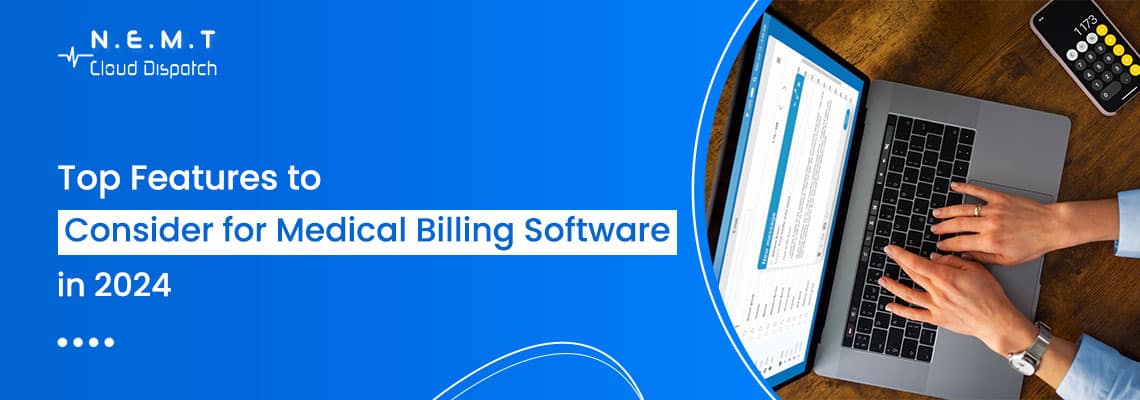Choosing the right medical billing software is crucial for the efficient management of healthcare practices. It streamlines the billing process, reduces errors, and ensures compliance with healthcare regulations. Here, we delve into the essential features that make medical billing software an invaluable tool for healthcare providers.
Essential Features to Look for in Medical Billing Software
User-Friendly Interface
A user-friendly interface is critical for the smooth operation of medical billing software. It should be intuitive and easy to navigate, allowing users to quickly learn and efficiently use the system. Key aspects include a simple dashboard that provides an overview of key metrics and tasks, logical menu structures for easy navigation, and customization options that enable users to tailor the interface to their individual preferences.
Automated Billing and Coding
Automation is at the heart of modern medical billing software, significantly reducing the chances of human error and speeding up the billing process. Essential features include automated code entry with integration to ICD-10, CPT, and HCPCS codes to ensure accurate coding, claim scrubbing that checks claims for errors before submission to avoid denials, and recurring billing which automatically generates bills for repeat patients or ongoing treatments.
Claims Management
Effective claims management ensures that healthcare providers get paid promptly and accurately. Important features include real-time claims tracking from submission to payment, denial management tools for identifying, addressing, and resubmitting denied claims, and batch processing capabilities that allow multiple claims to be processed at once, saving time and effort.
Patient Management
Medical billing software should integrate seamlessly with patient management systems to streamline administrative tasks. This includes integration with electronic health records (EHR) to ensure all patient information is available and up-to-date, appointment scheduling systems to manage appointments and related billing, and patient portals that allow patients to view their billing information, make payments, and update personal details online.
Reporting and Analytics
Robust reporting and analytics tools help healthcare providers understand their financial health and optimize their billing processes. Essential features include financial reports that provide detailed information on revenue, outstanding payments, and other financial metrics, customizable reports that can be tailored to specific needs, and data analytics tools for analyzing billing data to identify trends, inefficiencies, and opportunities for improvement.
Compliance and Security
Compliance with healthcare regulations and ensuring the security of patient data are paramount. Key features include adherence to HIPAA regulations to protect patient information, comprehensive audit trails that log all activities for auditing purposes, and secure encryption of sensitive data to prevent unauthorized access.
Integration Capabilities
Integration with other systems and software is essential for a seamless workflow. This includes synchronization with EHR and EMR systems to ensure consistent data across platforms, integration with accounting software for streamlined financial management, and compatibility with other healthcare apps and tools to enhance functionality.
Customer Support
Reliable customer support ensures that any issues are promptly addressed, minimizing disruptions. Key aspects include 24/7 support to address issues at any time, access to training materials, webinars, and tutorials to help users make the most of the software, and dedicated account managers who provide personalized support.
Scalability
As healthcare practices grow, their software needs to scale accordingly. Important features include flexible pricing plans that cater to practices of all sizes, modular features that allow users to add or remove capabilities as needed, and support for practices with multiple locations.
Cost Efficiency
Finally, cost efficiency is a major consideration. This includes transparent pricing with clear and upfront costs without hidden fees, demonstrable return on investment (ROI) through reduced errors, faster payments, and improved efficiency, and the availability of free trials or demo versions to test the software before committing.
Comparing Different Medical Billing Software Options
Choosing the right medical billing software is crucial for optimizing the financial operations of a healthcare practice. NEMT Cloud Dispatch Billing Software is highly customizable and secure solution for practices of all sizes, with a strong emphasis on compliance. Each software option balances ease of use, functionality, and cost, allowing healthcare providers to select the best fit for their specific requirements.
Overcoming Implementation Challenges
Overcoming implementation challenges in medical billing software requires a strategic approach focused on careful planning and robust support. Key steps include thorough initial training for staff to ensure they are comfortable with the new system, as well as ongoing support to address any issues that arise. Choosing a vendor that offers comprehensive onboarding assistance and responsive customer service is crucial.
Additionally, it’s important to allocate sufficient time for data migration and to conduct extensive testing to ensure the system works seamlessly with existing workflows. By addressing these areas, healthcare practices can mitigate common implementation hurdles and achieve a smoother transition to the new software.
Benefits of Medical Billing Software
Investing in medical billing software offers significant long-term benefits that extend beyond immediate financial improvements. Firstly, it streamlines billing processes, reducing administrative workload and allowing healthcare providers to focus more on patient care. Enhanced accuracy in coding and claims submission decreases the likelihood of errors and denials, leading to faster reimbursements and improved cash flow.
Additionally, robust reporting and analytics tools provide valuable insights into financial performance and operational efficiency, facilitating better decision-making. Compliance with regulatory requirements is easier to maintain, reducing the risk of costly penalties. Over time, these efficiencies contribute to cost savings, improved patient satisfaction through better billing experiences, and the scalability to support practice growth and expansion.
Final Say
Choosing the right medical billing software involves careful consideration of various features that can significantly impact the efficiency and profitability of a healthcare practice. By prioritizing user-friendliness, automation, claims management, patient integration, robust reporting, compliance, integration capabilities, customer support, scalability, and cost efficiency, healthcare providers can ensure they select a solution that meets their needs and enhances their billing operations.


